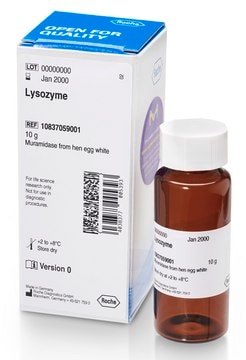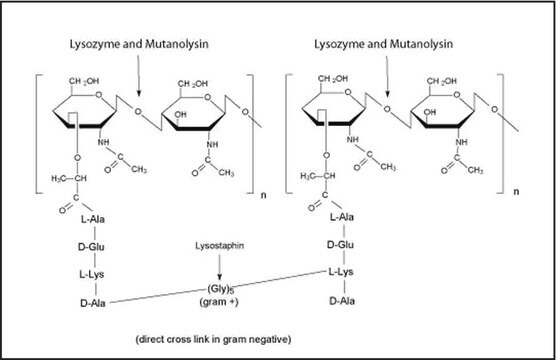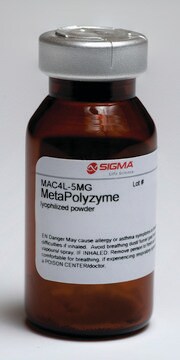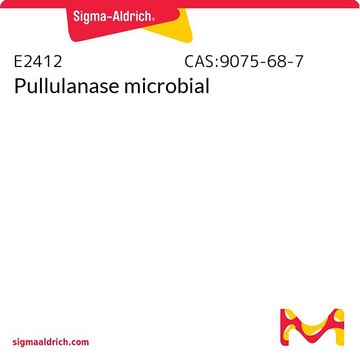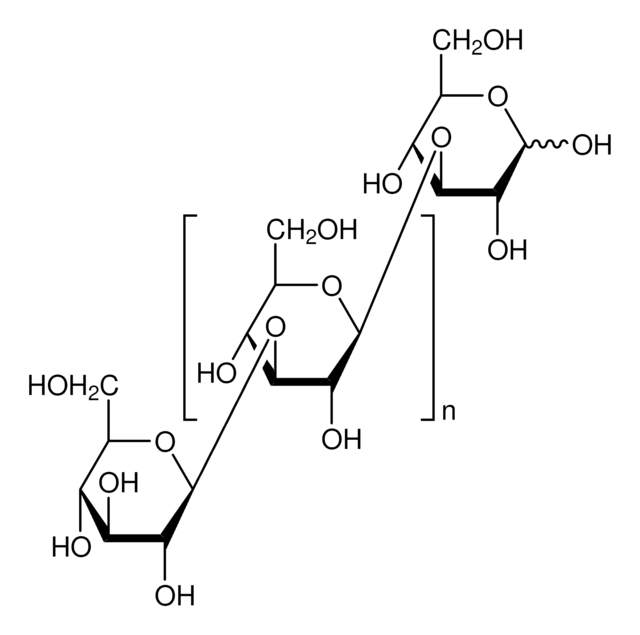L4025
Lyticase from Arthrobacter luteus
lyophilized powder, ≥200 units/mg solid
Synonym(s):
(1,3)-β-D-Glucan endohydrolase, 1,3-β-Glucan glucohydrolase, Bacterial lyticase, Lysing enzyme
About This Item
Recommended Products
biological source
bacterial (Arthrobacter luteus)
Quality Level
form
lyophilized powder
specific activity
≥200 units/mg solid
technique(s)
cell based assay: suitable
suitability
suitable for cell lysis
application(s)
diagnostic assay manufacturing
storage temp.
−20°C
Looking for similar products? Visit Product Comparison Guide
Application
- as a component in spheroplasting buffer to prepare yeast nuclear extracts
- for digestion in sample preparation for β-glucan enzymatic assay using yeast
- to lyse cells for RNA isolation
Biochem/physiol Actions
Unit Definition
Other Notes
Signal Word
Danger
Hazard Statements
Precautionary Statements
Hazard Classifications
Resp. Sens. 1
Storage Class Code
11 - Combustible Solids
WGK
WGK 3
Flash Point(F)
Not applicable
Flash Point(C)
Not applicable
Personal Protective Equipment
Regulatory Listings
Regulatory Listings are mainly provided for chemical products. Only limited information can be provided here for non-chemical products. No entry means none of the components are listed. It is the user’s obligation to ensure the safe and legal use of the product.
JAN Code
L4025-250KU-PW:
L4025-BULK:
L4025-25KU-PW:
L4025-VAR:
L4025-50KU:
L4025-1MU-PW:
L4025-1MU:
L4025-100KU:
L4025-250KU:
L4025-25KU:
L4025-100KU-PW:
L4025-50KU-PW:
Choose from one of the most recent versions:
Already Own This Product?
Find documentation for the products that you have recently purchased in the Document Library.
Customers Also Viewed
Protocols
This procedure may be used for the determination of Lyticase activity using Baker’s yeast as the substrate.
Our team of scientists has experience in all areas of research including Life Science, Material Science, Chemical Synthesis, Chromatography, Analytical and many others.
Contact Technical Service




